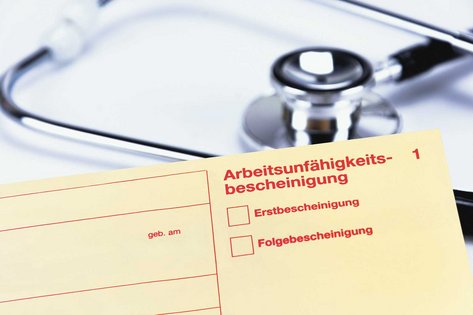 ©thodonal - stock.adobe.com
©thodonal - stock.adobe.com
Health Insurance
ed* Nr. 02/2019 – Chapter 3
a) Finland
The Finnish health care system is mainly tax-financed as a type of ‘citizens‘ health insurance’.
Finland’s 300 municipalities are responsible for the provision of primary medical care. Private health facilities are the exception in the system. Price and quality competition are increasingly being fuelled by nationwide tenders for health services, in which private institutions can also participate. The public health system also includes services for long-term care.
Approximately 80 percent of health expenditure is financed from public funds and administered by municipalities along the entire spectrum of healthcare. The municipality levies a tax of between 18 percent and 22.5 percent of taxable income per municipality to ensure the provision of healthcare. In addition, the municipalities receive discretionary tax subsidies from the federal government. Part of health-related expenditure, particularly sickness benefits after salary continuation has expired, is financed by the national health insurance system, which also includes the self-employed and pensioners. Deductions amount to between 1.5 percent and 2.1 percent.
A unique feature in Finland is the provision of occupational medical care by hospitals in the primary medical care system. In Finland, about one third of the population has access to this parallel system – 87 percent of the working population. Occupational medical care is an important competitive element for employers, as waiting times or gatekeepers (official first points of contact) in the public system can be reduced or completely circumvented. Continuing to pay wages for up to two months in the event of an illness is also a competitive factor for employers.
In addition, the Finns pay for private healthcare or take out supplementary private insurance. This supplementary insurance is used to finance certain benefits or co-payments not covered by the public system, which are quite significant in Finland. The average co-payment is €718 per person (2015).
By further opening up freedom of choice, waiting times are to be reduced and accessibility improved. The strict rules on minimum numbers and concentration of specialised services in hospital care show that quality clearly takes precedence over accessibility.

b) Croatia
The Croatian Ministry of Health defines the strategic regulatory framework for financing, providing and guaranteeing healthcare and charges the Health Institute (HZZO) with the operational provision of healthcare.
The HZZO administers approximately €2.9 billion per year (2016) for the financing of the country’s healthcare system.
The Croatian public health system is financed from three sources. The largest share (91 percent) is generated
through payments as a result of employment subject to social insurance contributions. Contributions are paid entirely by the employer. Since 1 January 2019, the contribution rate has been 16.5 percent. Insured persons have the option of taking out voluntary supplementary insurance to protect themselves against co-payments. This supplementary insurance is offered by the HZZO itself. The income from the premiums for supplementary insurance total around €210.6 million. This corresponds to 7.3 percent of total revenue. The premium is €14.63 per month.
The third source of financing for the HZZO consists of subsidies of €45 million generated by taxes. This is due, among other things, to challenges in collecting contributions as a result of contribution reductions or exemptions, as well as missing contributions due to undeclared work.
Persons insured in the public health system make co-payments for all health services, except in emergencies. Insured persons make an additional payment of two euros per prescription or per visit to a general practitioner. Additional payments
are also stipulated for specialist, dental, physiotherapeutic and rehabilitative services, which cover the treatment costs proportionately. A hospital stay incurs a co-payment of 20 percent of the costs, at least €20.90 per day. In total, the co-payments per treatment occurrence are capped at the equivalent of €418 purchasing power parity. A treatment occurrence comprises a visit to a physician in private practice and a stay in hospital.
In the event of temporary incapacity to work, the employee is entitled to continue receiving their salary. During the first 42 days of sick leave, the employer makes payments in the amount agreed in the work contract or collective bargaining agreement. However, this must be at least 70 percent of the average income for the last six months. From the 43rd day of sick leave, the employer charges the continued salary payment to the HZZO.
Bottom line: despite the financial challenges posed by a lack of income due to undeclared work, comprehensive exemptions from contributions and co-payments, uneconomical supplementary insurance contracts and a volatile economic situation, the scope of benefits has been gradually extended. This is now comparable to that of other Member States.
The strategic trends in healthcare are to ensure the connectivity and continuity of healthcare, to standardise and improve the quality of healthcare, to optimise the efficiency and effectiveness of healthcare and ultimately to ensure the long-term financial viability of healthcare.

c) A look at Germany: the path to modernising health systems
The overview of the health systems shows that the reforms initiated in Finland and Croatia are aimed at securing the financing of the systems over the long term.
Whereas in Finland the socio-geographical situation is the catalyst for regional, financing, health and social reforms, in Croatia a fledgling health system is developing which is gradually expanding its supply structures. Thus, the focus of the reforms is different in each country. The Finnish system must optimise its health care structures in order to mitigate the expected increase in expenditure, while in Croatia a long-term strategy is needed to provide the system with missing revenues.
The German healthcare system is also going through a period of diverse reform initiatives. The legislative proposals from the Federal Ministry of Health include the law for more safety in the supply of medicines; the protection against measles Act; and the implant register Act as well as numerous occupational laws and the Act to strengthen rehabilitation and intensive care.
The three systems are united through their efforts towards modernisation of their systems using digital solutions.
ePrescriptions have been gradually rolled out in Finland since 2010. The ePrescription is now fully established. Finns have been able to use ePrescriptions in Estonia since January 2019, and in Croatia since April 2019. From 2022, the ePrescription will be supplemented with individual medication data. The Finns are taking things a step further with the Act on the Secondary Use of Social Welfare and Health Care Data. The Act forms the basis for the safe and effective processing of health and social security data and paves the way for the data economy, which is part of Finland’s national strategy. Croatia has set out action areas in its ‘e-Croatia 2020 Strategy’. The vision is to establish a public administration for the benefit of its citizens. This includes the national health institute HZZO as well as cross-border healthcare (ePrescriptions).
Since 2016, statutory health insurance in Germany has provided financial resources via the Innovation Fund to promote innovative forms of healthcare, which are to be incorporated into mainstream healthcare. The Digital Healthcare Act (DVG) provides for the continuation of the Innovation Fund until 2024. The DVG also provides for the increased use of telemedicine, the entitlement of insured persons to digital health applications (apps) and the
obligation of health insurance funds
to offer their insured persons an electronic patient file.
Looking at the respective Council Presidencies of these countries, there has been a clear focus on digital data exchange and data processing via artificial intelligence. This includes expanding the cross-border exchange of medical records and the establishment of a European Health Data Space.
In terms of the EU-wide digital exchange
of information, competences are already being bundled across borders in electronic reference networks in order to exchange knowledge of rare diseases and their treatment.

